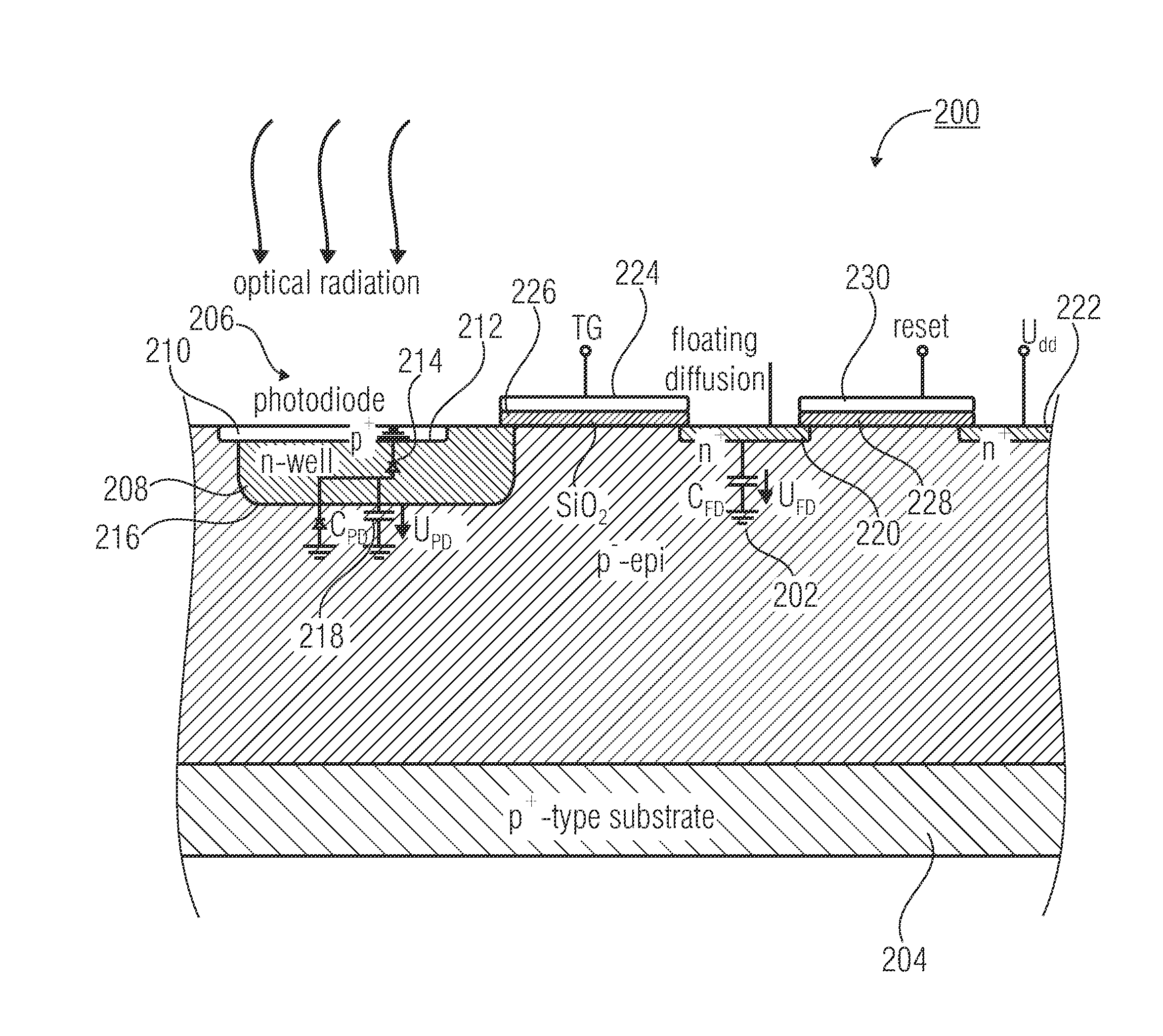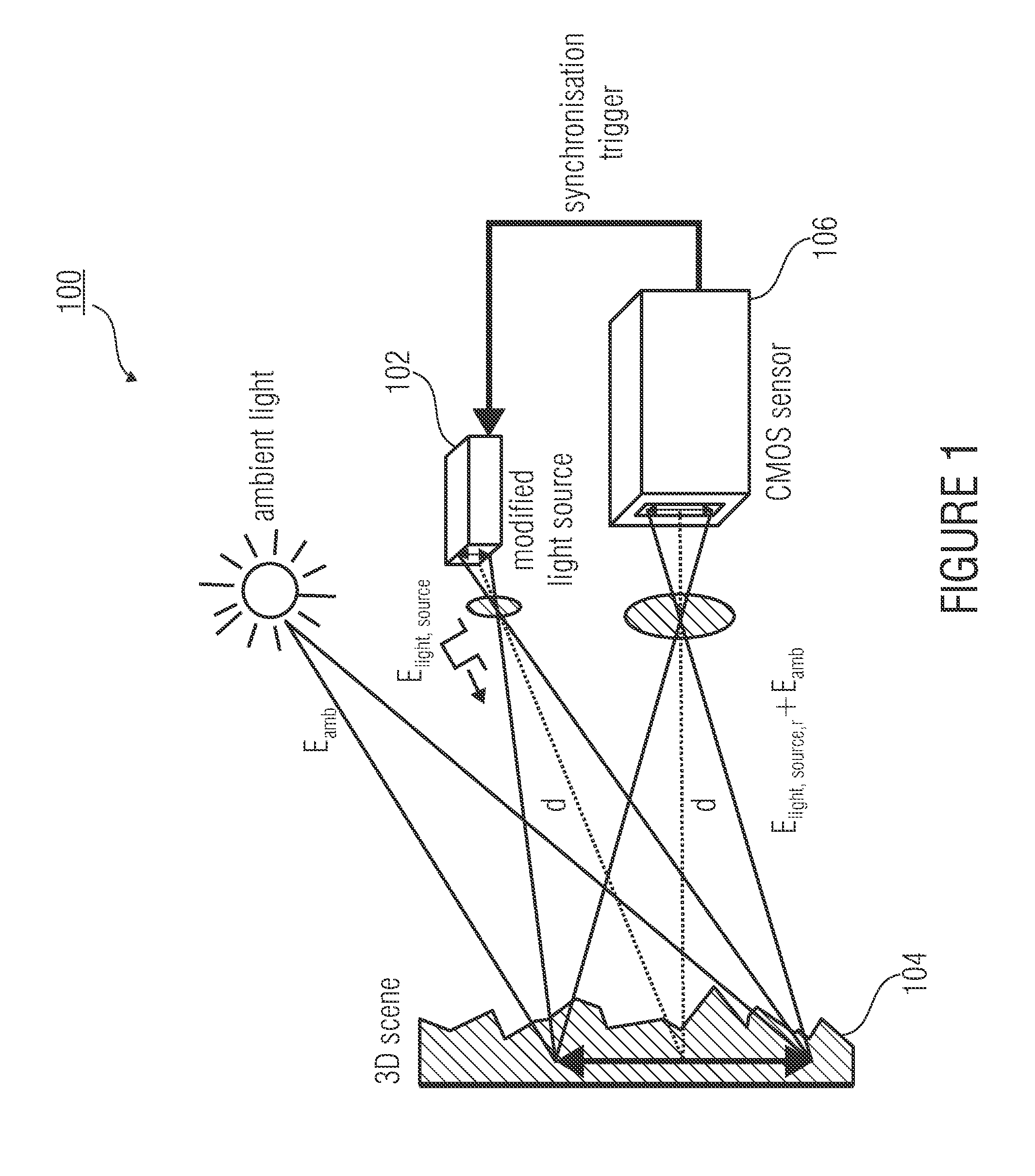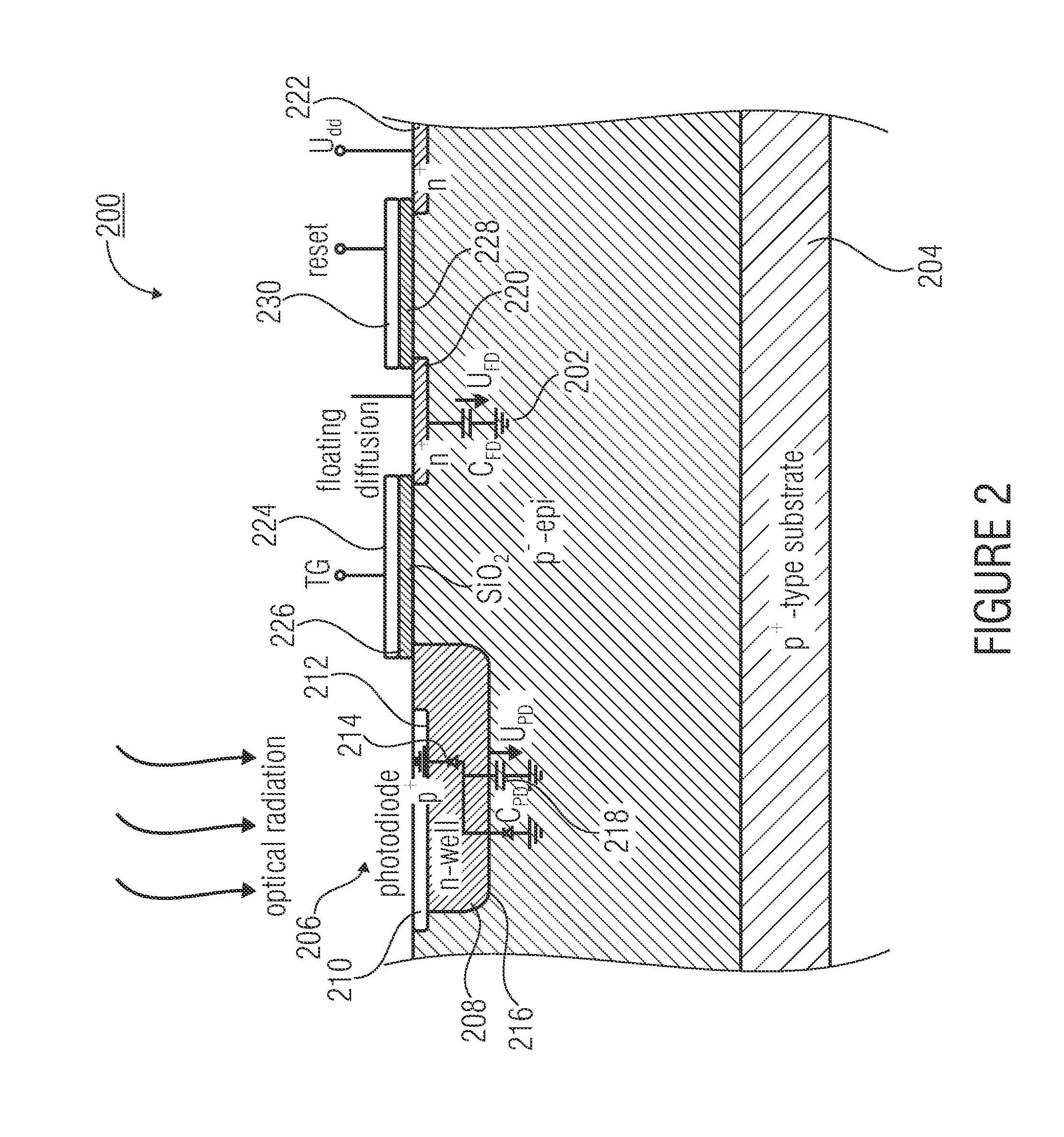Concept for optical distance measurement
a technology of optical distance and concept, applied in the direction of distance measurement, diodes, instruments, etc., can solve the problems of difficult precision of distance measurement, limited method speed, and difficult to imagine, so as to increase the measuring speed, double the measuring speed, and halve the laser energy
- Summary
- Abstract
- Description
- Claims
- Application Information
AI Technical Summary
Benefits of technology
Problems solved by technology
Method used
Image
Examples
Embodiment Construction
[0041]Before the present invention is discussed in detail referring to FIGS. 4 to 7, it is pointed out that same elements in the figures are provided with same or similar reference numerals and that a repeated description of these elements is omitted.
[0042]Additionally, it is pointed out that, in the following description of the figures, it is assumed that the pixel structures shown are a part of a system for optical distance measurement, similar to FIG. 1, which is why reference is partly made to FIG. 1 and the elements thereof, without repeating the description of the setup of FIG. 1. In particular, the pixel structures described below may exemplarily represent a single pixel of a pixel array of an image sensor 106, as will become apparent from the following description.
[0043]FIG. 4 shows a pixel structure 400 in accordance with a preferred embodiment of the present invention in a schematic top-view illustration.
[0044]The pixel structure 400 comprises a photoactive or photo-sensit...
PUM
 Login to View More
Login to View More Abstract
Description
Claims
Application Information
 Login to View More
Login to View More - R&D
- Intellectual Property
- Life Sciences
- Materials
- Tech Scout
- Unparalleled Data Quality
- Higher Quality Content
- 60% Fewer Hallucinations
Browse by: Latest US Patents, China's latest patents, Technical Efficacy Thesaurus, Application Domain, Technology Topic, Popular Technical Reports.
© 2025 PatSnap. All rights reserved.Legal|Privacy policy|Modern Slavery Act Transparency Statement|Sitemap|About US| Contact US: help@patsnap.com



